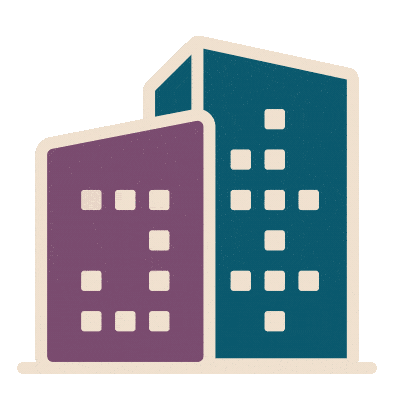Meet IWBI’s team behind WELL v2
It’s time we meet the caretakers, the stewards and the brains behind WELL v2—the Standard Development team at IWBI.
Gardens around the world are the result of careful planning, devoted effort and the constant nurturing of dedicated caretakers. Without the watchful eyes and expertise of those green-thumbed guardians, seeds would struggle to root, spread and grow. Without the gardener, the garden is simply a plot of land.
Not unlike the plants we tend and care for in our own backyards and community gardens, WELL v2 was once just a seed of inspiration. Planted a little over three years ago, it’s been carefully pruned, nurtured and loved along the way by its devoted community of gardeners—and it’s officially come to fruition.
As we celebrate the graduation of WELL v2 from pilot, we want to take a moment to introduce you to IWBI’s Standard Development (SD) team. These individuals are the shepherds, the guardians and the brains behind WELL v2. Their work has been integral to updating and optimizing WELL v2 from pilot to graduation, and they came together to share their thoughts on each of WELL v2’s concepts as it officially launches into the world.
Solutions for holistic health and well-being
Incorporating the tremendous feedback they received from WELL users, expert advisors from around the world and more, the SD team sought to highlight areas in WELL v2 that could address ongoing social challenges and improve the health and well-being of our collective communities.
“We are all members of various communities, each of which is shaped by unique social connections, physical spaces, and collective actions and all of which profoundly influence our health and well-being. The Community concept aims to build healthy, equitable, resilient communities by promoting health services that meet the needs of diverse populations, policies that foster inclusive social engagement, and design strategies that enable all individuals to access, participate and thrive within each space,” IWBI’s Community concept lead Rose Winer says.
Emily Winer Suresky, IWBI’s Mind concept lead, highlighted the effort to ensure WELL v2 would offer strategies to support the mental health of people across WELL’s range of project types, populations and geographical locations.
“Mental health does not have a one-size-fits-all solution—what works for one individual, one building or one community may differ widely from the next,” she says. “The Mind concept acknowledges that need for flexibility by providing preconditions that can be tailored to unique qualities of each WELL project, as well as a diversity of optimizations to help them address their specific mental health-related needs.
Sound concept lead Ethan Bourdeau stressed the importance—and pervasiveness—of sound’s impact on the overall health and well-being of people. WELL v2 provides key solutions that address many of the common sound challenges found in environments everywhere.
“As humans, we are constantly listening. Whether we know it or not, our response to the sonic world around us has dramatic implications on our comfort, health and well-being,” Bourdeau says. “The Sound concept establishes the critical role that planning and acknowledgement of acoustics in-situ plays in the meaningful design of background noise levels, sound isolation, reverberation time and human response to sound in the spaces we frequent.”
Healthier habits make healthier people
Anja Mikic, Nourishment concept lead, noted the crucial way that diet can impact more than just our personal health. The concept provides actionable strategies to enhance eating habits.
“Diet is inextricably linked to human and planetary health,” Mikic says. “From an emphasis on fruits and vegetables to the development of a new beta feature, N14β: Red and Processed Meats, the Nourishment concept supports healthy and sustainable eating patterns that help all individuals and the planet thrive.”
Movement concept lead Vienna McLeod stressed the critical connection between movement and the wellness of people everywhere. The concept highlights how organizations can incorporate movement into their staff’s daily activities.
“Humans are built to move. How we move and how much we move have a tremendous impact on our health and well-being,” McLeod stresses. “The Movement concept tackles both the quality and quantity of our daily movement through industry best practices and evidence-based strategies that support ergonomic comfort, active design and policy interventions that keep us moving all day long.”
Optimized strategies for evolving challenges
In an era changed by the global pandemic, examining and refining the strategies for proper air quality was a key priority. Nathan Stodola, Chief Engineer and Air concept lead, shared how WELL v2 addresses air quality from multiple sources.
“Pollutants in a building’s air can come from both outdoor sources (fires, traffic) and indoor sources (emissions from products, airborne germs from occupants). Thus, it is important to design the ventilation system to target the appropriate contaminants,” Stodola stresses.
Similarly, Stodola, who is also IWBI’s Thermal Comfort lead, shared ways the WELL v2 concept focuses on the individualized experience of people within a building or space.
“Thermal comfort is driven in part by personal preferences and expectations. Thus, several features in this concept - T03: Thermal Zoning, T04: Individual Thermal Comfort, T08β: Enhanced Operable Windows - aim to increase building occupants’ control of their thermal environment,” Stodola says.
Dr. Rodolfo Perez, IWBI’s Material concept lead, examined ways to ensure the Material concept would more readily meet the demands of a global audience while also promoting healthier, safer environments.
“By rewriting and restructuring the concept into three founding pillars: remediation, healthier materials selection and stewardship in operations, the Materials concept attempts to reduce hazards and provide engineering controls in the built environment towards reaching a truly global audience,” he says.
Perez, also WELL v2’s Water concept lead, highlighted the critical need for safe water management and the concept’s focus on limiting the potential for disease transmission.
“Water is fundamental for sustaining life but can carry disease if unmanaged,” Perez stresses. “The Water concept embeds a risk-based conceptual framework that aims to provide sustained delivery of quality drinking water and protection against Legionella and mold colonization throughout the building.”
For Light concept lead Gayathari Unnikrishnan, integrating unique lighting solutions into WELL v2 was key to helping projects meet their lighting goals while also allowing teams to think outside of the box.
“The Light concept has two goals: The first is to provide enough light to see and conduct everyday tasks in a comfortable environment. The second is to ensure that people have appropriate light exposure to maintain circadian rhythms for brighter days and darker nights,” Unnikrishnan says. “The Light concept outlines requirements that weave electric light and daylight together to achieve these goals while also providing space for creative solutions.”
The most refined version of WELL to date
There you have it! For the past two years, the Standard Development team has been hard at work enhancing and refining the ten WELL v2 concepts, alongside many of you. And what’s emerged from their years of effort is the most dynamic, resilient and validated version of the WELL Building Standard to date.
Along with the team’s enhancements and optimizations, WELL v2 has been fortified by ongoing research and tested under the most strenuous conditions to be a framework that can meet any challenge, address any issue and improve human health and well-being in meaningful and actionable ways. Start your project and discover what WELL v2 can do for your building, organization and community today.







